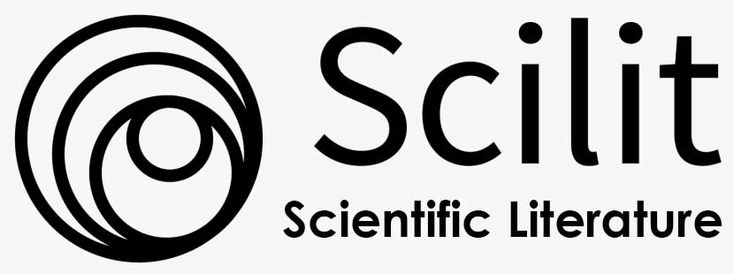COMMUNITY CAPACITY IN DEALING WITH DROUGHT IN INSANA BARAT DISTRICT, NORTH CENTRAL TIMOR, EAST NUSA TENGGARA
Abstract
Insana Barat Subdistrict is an area in North Central Timor Regency which is vulnerable to the dry season every year and experiences a water deficit. To reduce the risk of drought, community preparedness needs to be improved through the provision of water to deal with drought. Several efforts have been made by the government and the community to cope with drought, including the construction of dams, distribution of clean water fiber, and the existence of cropping patterns in agriculture. This study aims to determine the capacity of the people of Insana Barat District in dealing with drought. The role of the community becomes very important because in fact the community and local organizations are the key in disaster risk reduction initiatives. The method used in this research is quantitative with a survey in Insana Barat District with 335 respondents spread over each village. Determination of respondents in this study was done randomly. The analysis technique used is scoring and capacity calculation using the asset pentagon on the variables of human assets, social assets, natural assets, physical assets and financial/financial assets. The results showed that the people in Usapinonot Village, Unini Village, Letneo Village, Banae Village, Nifunenas Village, Subun Tualele Village, Subun Bestobe Village belonged to low capacity, Subun Village, Lapeom Village, Atmen Village and South Letneo Village were classified as medium capacity. and Oabikasi Village is included in the high classification.
Keywords
Full Text:
PDFReferences
Adger, W. N., Arnell, N. W., & Tompkins, E. L. (2005). Successful adaptation to climate change across scales. Global Environmental Change, 15(2), 77–86. https://doi.org/10.1016/j.gloenvcha.2004.12.005
Elkouk, A., Pokhrel, Y., Satoh, Y., & Bouchaou, L. (2022). Implications of changes in climate and human development on 21st-century global drought risk. Journal of Environmental Management, 317(May), 115378. https://doi.org/10.1016/j.jenvman.2022.115378
Kollmair, M., & Gamper, J. (2002). The Sustainable Livelihoods Approach: Input Paper for the Integrated Training Course of NCCR North-South. Compiled by M. Kollmair and St. Gamper, Juli 2002 Development Study Group, 9(September), 1–11. https://www.alnap.org
McClanahan, T. R., Donner, S. D., Maynard, J. A., MacNeil, M. A., Graham, N. A. J., Maina, J., Baker, A. C., Alemu I., J. B., Beger, M., Campbell, S. J., Darling, E. S., Eakin, C. M., Heron, S. F., Jupiter, S. D., Lundquist, C. J., McLeod, E., Mumby, P. J., Paddack, M. J., Selig, E. R., & van Woesik, R. (2012). Prioritizing Key Resilience Indicators to Support Coral Reef Management in a Changing Climate. PLoS ONE, 7(8). https://doi.org/10.1371/journal.pone.0042884
Nasrnia, F., & Ashktorab, N. (2021). Sustainable livelihood framework-based assessment of drought resilience patterns of rural households of Bakhtegan basin, Iran. Ecological Indicators, 128, 107817. https://doi.org/10.1016/j.ecolind.2021.107817
Quandt, A. (2018). Measuring livelihood resilience: The Household Livelihood Resilience Approach (HLRA). World Development, 107, 253–263. https://doi.org/10.1016/j.worlddev.2018.02.024
Sharafi, L., Zarafshani, K., Keshavarz, M., Azadi, H., & Van Passel, S. (2020). Drought risk assessment: Towards drought early warning system and sustainable environment in western Iran. Ecological Indicators, 114(December 2018), 106276. https://doi.org/10.1016/j.ecolind.2020.106276
Shen, J., Chanda, A., D’Netto, B., & Monga, M. (2009). Managing diversity through human resource management: An international perspective and conceptual framework. International Journal of Human Resource Management, 20(2), 235–251. https://doi.org/10.1080/09585190802670516
Wang, P., Qiao, W., Wang, Y., Cao, S., & Zhang, Y. (2020). Urban drought vulnerability assessment – A framework to integrate socio-economic, physical, and policy index in a vulnerability contribution analysis. Sustainable Cities and Society, 54(December 2019), 102004. https://doi.org/10.1016/j.scs.2019.102004
Water Resources Research. (2021). Jenkins - An Integrated Framework for Risk‐Based Analysis of Economic Impacts of Drought.pdf. (n.d.).
DOI: http://dx.doi.org/10.21776/ub.jeest.2022.009.02.3
Refbacks
- There are currently no refbacks.

This work is licensed under a Creative Commons Attribution 4.0 International License.







